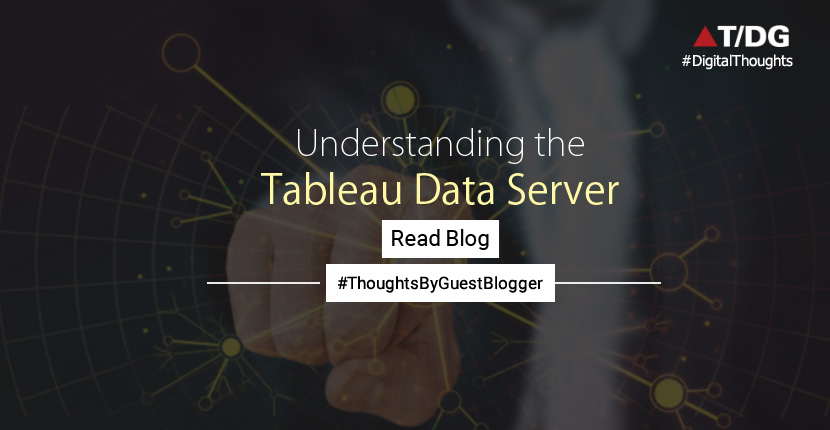The Tableau Data Server

Ensuring that the right data is available to the right people in the organization, at the time they need it, is important to the success of IT organizations. Oftentimes, in spite of stringent IT governance policies, users often take the route of saving critical analysis documents on their desktop for quick analysis or resort to going to the cloud. In a self-service environment, the role of Data Governance is to ensure security is enforced while letting users get the answers they need.

Source: https://bit.ly/2DxoUTT
• Data connections and joins
• Calculated fields (for example, a common definition of “profit”)
• Field definitions
• Sets and groups
• User filters
• Calculated fields (for example, a common definition of “profit”)
• Field definitions
• Sets and groups
• User filters
At the same time, to enable self-service and flexibility, users can extend the data model by blending in new data or creating new definitions and allow the newly defined data model to be delivered to production in an agile manner. The centrally managed data will not change, but users retain flexibility.
1] Data Sources
Published data sources can be of two types:a] Tableau Data Extracts: Users can connect directly to a published data extract. An organization may choose this approach to provide users with fast, self-service analytics while taking the load off critical systems. Centralized Data Extracts also prevent the proliferation of data silos around an organization. Data refreshes need only be scheduled once per published extract and users across the organization will stay up to date with the same shared data and definitions.
b] Shared Proxy Connections: Users can connect directly to live data with a proxy database connection. This means that each user does not have to set up a separate connection, making it easier to get started working with data. The user also does not need to install any database drivers, reducing the load on IT to distribute drivers and keep them up to date.
2] Report Governance
As data and information continue to grow, information governance becomes critical. It’s important that users only have access to information they are authorized to see. There are two ways to manage report governance in Tableau – through sites and through projects.
Tableau Server has an out-of-the-box deployment method that provides data isolation and multi-tenancy. A server can have one or more sites, a site can have one or more projects and a project can have one or more workbooks. These projects and workbooks can be managed and monitored for usage with Tableau. A site is a tenant and Tableau Server ensures data is isolated between any two sites.
This means you cannot run queries across sites so there is a strong data isolation boundary between sites. This process creates what is sometimes referred to as a “Chinese Wall” between views. If you want full data isolation, the best way to accomplish this is to create a site, create a project in the site and manage permissions on the project and workbooks to govern access.
Subscriptions let users subscribe to content they are most interested in and have it automatically delivered to their email inbox on a schedule. Users can subscribe and manage their subscriptions to a worksheet or workbook with a single click.
Tableau offers several options when it comes to performing change management with workbooks. Organizations that have existing change management tools should use them to track changes in Tableau workbooks. Those without these types of tools can set up a manual change management process by either creating user folders on the network or using a backup server and performing a nightly backup that is saved. These can then be restored as needed.
As with any development process, moving work from development to production should follow stringent guidelines that include testing and approvals. One of the best and easiest ways to support the promotion to production is to set up a staging area project that parallels each production project. Staging projects can be set up either on a development server or directly on the production server.
Users publish new work to the appropriate staging area and send a follow-up request to the team responsible for validation and promoting to production. When the data source behind the Tableau view used in development is different than production, the connection information will need to be changed.
Most Business Intelligence platforms say they offer metadata functionality but require modeling the entire enterprise as a first step, or they don’t provide metadata capabilities at all. Tableau has taken a hybrid approach so that IT can add value by providing a rich metadata layer – yet business people are empowered to modify and extend it. This means the metadata layer does not require extensive modeling exercises before getting started. Tableau has been so successful in making metadata seamless, approachable and transparent, that customers often don’t realize Tableau has a metadata layer.
Tableau allows users to combine data from different Data Sources into one hybrid model without any changes to the Connections or Data Models. Data Models can have a dependency on other Data Models. Additionally, a Connection can be used in multiple Data Models, and a Data Model can be used in multiple views, and multiple views can be used in a dashboard. Enrol for a tableau certification course to learn more about Tableau data server.
